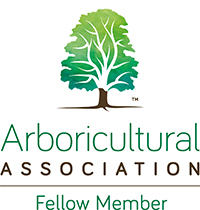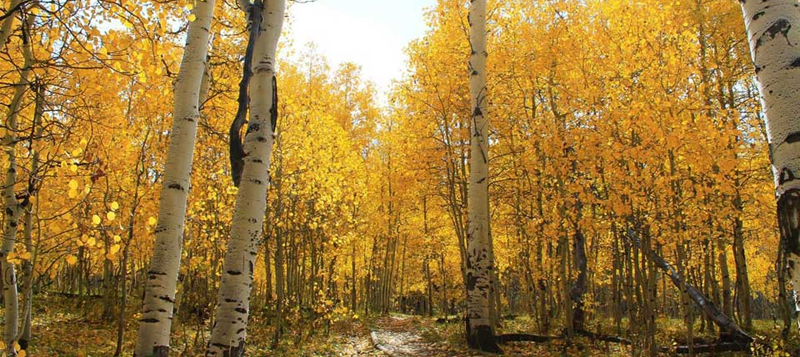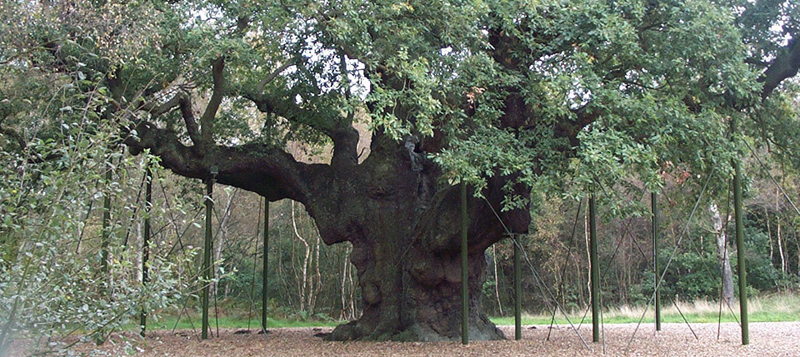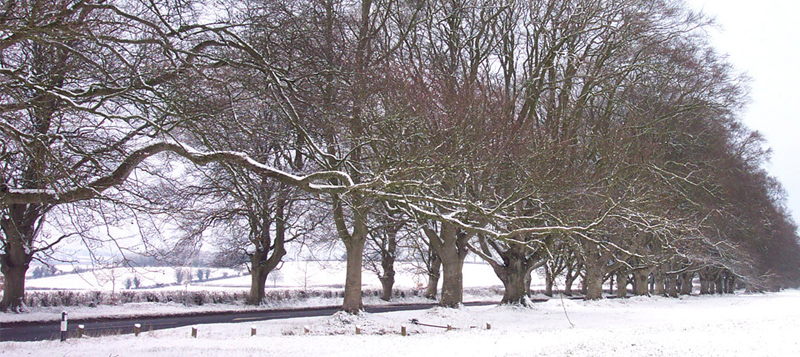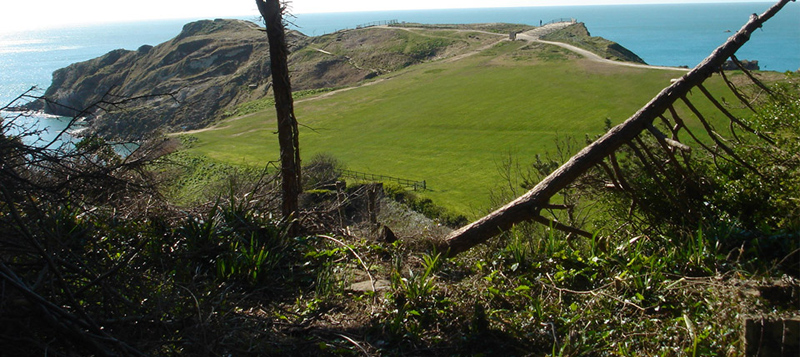Address
Office F11
10 Whittle Road
10 Whittle Road
Ferndown
Dorset
South West England
BH21 7RU
England UK
Opening Hours
Today
09:00-17:00
View All Hours
Sunday
Closed
Monday
09:00-17:00
Tuesday
09:00-17:00
Wednesday
09:00-17:00
Thursday
09:00-17:00
Friday
09:00-17:00
Saturday
Closed
About Mark Hinsley Arboricultural Consultants Ltd
We are a well established and successful practice of arborists based in Dorset, but operating throughout the South of England. Our chief aim is to provide the very best in tree advice and reporting, ensuring at all times that we strive to serve the best interests of our clients, whether they be a private individual or a large developer.
Tree Liability Assessments and Tree Management Plans
Owning trees, no matter how many, brings with it responsibility. You have a duty of care to keep users of your property, or neighbouring properties, safe from any harm presented by your trees. Should an accident occur because of a tree or branch failing you could be found negligent if you have not demonstrated "reasonable care". You can do this by having your trees inspected at regular intervals by a qualified Arboriculturalist.
Development Sites and Trees
Whether you are a developer about to embark on a major new building project or a householder extending your property you will need to take into consideration any trees within 15m of the proposed building work, with or without Tree Preservation Orders. We can provide advice and reports for all stages of the planning process to BS5837 standard.
Tree Surveys for Homebuyers
Homebuyers are often asked by their potential mortgage lender for a tree survey. Surveyors are experts in their own field and are not keen to comment on trees and an assessment by a qualified Arboriculturalist may be requested if they believe that trees could be compromising the integrity of a building.
Tree Preservation Orders
We can assist you with any aspect of Tree Preservation and Conservation Area orders - from making an initial application to appealing a Local Authority decision. We can also give expert advice on Local Authority regulations with regards to trees.
Expert Witness - Tree Issues
We offer a comprehensive advisory and reporting service for any tree issues requiring the support of an Expert Witness. This may be with regards to Tree Preservation Orders, Insurance and Liability Claims or Planning matters.
Subsidence and Damage
Trees can potentially cause damage to buildings, both directly and indirectly. Direct harm situations, where tree canopies can damage roof tiles and gutters, can cause concern to home owners and are easier to spot. Indirect damage is more difficult to assess, as it involves a variety of interplay between soils, roots, depth of foundations and changes to the environment around both the property and the trees. We are qualified to give expert advice on any issues you may have.
Ancient Tree and Landscapes
Evaluating ancient trees and landscapes is a process of applying knowledge and undertaking detective work. A thorough understanding of introduced species, including native conditions and dates of introduction, is essential.
Tree Liability Assessments and Tree Management Plans
Owning trees, no matter how many, brings with it responsibility. You have a duty of care to keep users of your property, or neighbouring properties, safe from any harm presented by your trees. Should an accident occur because of a tree or branch failing you could be found negligent if you have not demonstrated "reasonable care". You can do this by having your trees inspected at regular intervals by a qualified Arboriculturalist.
Development Sites and Trees
Whether you are a developer about to embark on a major new building project or a householder extending your property you will need to take into consideration any trees within 15m of the proposed building work, with or without Tree Preservation Orders. We can provide advice and reports for all stages of the planning process to BS5837 standard.
Tree Surveys for Homebuyers
Homebuyers are often asked by their potential mortgage lender for a tree survey. Surveyors are experts in their own field and are not keen to comment on trees and an assessment by a qualified Arboriculturalist may be requested if they believe that trees could be compromising the integrity of a building.
Tree Preservation Orders
We can assist you with any aspect of Tree Preservation and Conservation Area orders - from making an initial application to appealing a Local Authority decision. We can also give expert advice on Local Authority regulations with regards to trees.
Expert Witness - Tree Issues
We offer a comprehensive advisory and reporting service for any tree issues requiring the support of an Expert Witness. This may be with regards to Tree Preservation Orders, Insurance and Liability Claims or Planning matters.
Subsidence and Damage
Trees can potentially cause damage to buildings, both directly and indirectly. Direct harm situations, where tree canopies can damage roof tiles and gutters, can cause concern to home owners and are easier to spot. Indirect damage is more difficult to assess, as it involves a variety of interplay between soils, roots, depth of foundations and changes to the environment around both the property and the trees. We are qualified to give expert advice on any issues you may have.
Ancient Tree and Landscapes
Evaluating ancient trees and landscapes is a process of applying knowledge and undertaking detective work. A thorough understanding of introduced species, including native conditions and dates of introduction, is essential.
Mark Hinsley Arboricultural Consultants Ltd.
5
out of 5
based on 1 ratings.
Reviews & Testimonials for Mark Hinsley Arboricultural Consultants Ltd

Invaluable service, very knowledgeable. Thank you Mark.
September 16, 2018
Review by
Rodger Leach
Review by
Rodger Leach
Gallery
News
The questions we ask ourselves whenever we inspect trees for liability management on behalf of a client
are these:
What is the risk attached to retaining a tree in a particular condition in a particular location?
What is a proportionate response to said level of risk?
Proportionality comes in a number of guises:
1. If a client has a tree with some deadwood in the canopy which might drop off and fall into a woodland
or shrub border – spending £1,000.00 to pay a tree surgeon to remove it would be a disproportionately high cost when set against what is gained.
However, spending £1,000.00 to remove a completely dead tree standing beside a busy public highway
would be a reasonable reduction of liability for the money spent.
2. If a client has a healthy tree that is standing close to a building or even partially overhanging it, removal of such a tree may result in increased winter heating and summer cooling fans or air conditioning bills whilst exposing the building to potential structural damage from high winds. Spending £1,000.00 to remove the risk of such a tree falling onto the building coupled with the likely increased costs of not having it there would be a disproportionate cost to the small potential risk of it falling.
However, if the close tree is a tall pine tree with decay in the base which, if it fails, will make direct trunk to structure contact likely to cause significant structural damage and risk lives, the cost of removing it is not disproportionate to the gain.
3. If there is a hollow tree with pockets of decay which is home to nesting owls and roosting bats tucked away in a part of a site where hardly anybody ever goes, the cost of removing that tree is disproportionate to the wildlife conservation loss through the destruction of habitat.
If that same tree is in a prime location in front of a multi-occupancy dwelling where people come and go
frequently, the retention risk is higher and some action to reduce that risk may be proportionate.
The above a just a few artificial examples to give a flavour of our approach.
We are also aware that trees are self-optimising organisms which model themselves to withstand the daily forces which act upon them. Consequently, so called ‘preventative’ practices such as crown thinning and crown reduction often do more harm than good and create situations where they have to be periodically repeated. Spending money on tree work that has no benefit and only leads to the necessity of more tree work, is not, in our opinion, sound Arboriculture.
Generally, the risk to life and property from trees is low. Therefore, in our view, spending large sums of money on tree surveys which plot and identify every individual tree on a site and produce a little report on each one is also disproportionate to the actual level of risk.
Consequently, we work to a regime of negative reporting. We will inspect all the trees on the site, but only produce a report that includes those trees which require some action to remove or manage an unacceptable degree of risk.
Our reports will include a site plan with the approximate location of the trees in question plotted, and a description of the trees, what needs to be done, why and how soon in a schedule and a photograph of the trees indicating their survey number on the plan and the defect present. Only in extreme situations will we mark dangerous trees on site with spray paint.
The last factor of proportionate survey costs is the frequency of visits. These have to be based on the
intensity of site use by vulnerable targets, the general reliability or otherwise of the particular tree species,the potential or otherwise for trees to deteriorate quickly and the number of eyes on the trees on a regular basis that could be expected to report any apparent changes in tree condition. Urban resurvey reports are usually scheduled to be repeated every 1-3 years, elements of countryside reports may be as infrequent as 1 every 5 years.
Tree liability assessments are not perfect and do not remove all risk; they are not expected to. Liability for the tree owner is covered by taking ‘all reasonable precautions’. The single most important action that a property managing organisation can take to reduce their liability for potential tree damage or loss is to have a policy of tree liability management.
Essentially, when it comes to tree liability management, you are allowed to get it wrong as long as you have a clear policy which demonstrates the reasonable thought processes you went through and the principles you applied in so doing. We have often assisted clients with the production of such policies.
are these:
What is the risk attached to retaining a tree in a particular condition in a particular location?
What is a proportionate response to said level of risk?
Proportionality comes in a number of guises:
1. If a client has a tree with some deadwood in the canopy which might drop off and fall into a woodland
or shrub border – spending £1,000.00 to pay a tree surgeon to remove it would be a disproportionately high cost when set against what is gained.
However, spending £1,000.00 to remove a completely dead tree standing beside a busy public highway
would be a reasonable reduction of liability for the money spent.
2. If a client has a healthy tree that is standing close to a building or even partially overhanging it, removal of such a tree may result in increased winter heating and summer cooling fans or air conditioning bills whilst exposing the building to potential structural damage from high winds. Spending £1,000.00 to remove the risk of such a tree falling onto the building coupled with the likely increased costs of not having it there would be a disproportionate cost to the small potential risk of it falling.
However, if the close tree is a tall pine tree with decay in the base which, if it fails, will make direct trunk to structure contact likely to cause significant structural damage and risk lives, the cost of removing it is not disproportionate to the gain.
3. If there is a hollow tree with pockets of decay which is home to nesting owls and roosting bats tucked away in a part of a site where hardly anybody ever goes, the cost of removing that tree is disproportionate to the wildlife conservation loss through the destruction of habitat.
If that same tree is in a prime location in front of a multi-occupancy dwelling where people come and go
frequently, the retention risk is higher and some action to reduce that risk may be proportionate.
The above a just a few artificial examples to give a flavour of our approach.
We are also aware that trees are self-optimising organisms which model themselves to withstand the daily forces which act upon them. Consequently, so called ‘preventative’ practices such as crown thinning and crown reduction often do more harm than good and create situations where they have to be periodically repeated. Spending money on tree work that has no benefit and only leads to the necessity of more tree work, is not, in our opinion, sound Arboriculture.
Generally, the risk to life and property from trees is low. Therefore, in our view, spending large sums of money on tree surveys which plot and identify every individual tree on a site and produce a little report on each one is also disproportionate to the actual level of risk.
Consequently, we work to a regime of negative reporting. We will inspect all the trees on the site, but only produce a report that includes those trees which require some action to remove or manage an unacceptable degree of risk.
Our reports will include a site plan with the approximate location of the trees in question plotted, and a description of the trees, what needs to be done, why and how soon in a schedule and a photograph of the trees indicating their survey number on the plan and the defect present. Only in extreme situations will we mark dangerous trees on site with spray paint.
The last factor of proportionate survey costs is the frequency of visits. These have to be based on the
intensity of site use by vulnerable targets, the general reliability or otherwise of the particular tree species,the potential or otherwise for trees to deteriorate quickly and the number of eyes on the trees on a regular basis that could be expected to report any apparent changes in tree condition. Urban resurvey reports are usually scheduled to be repeated every 1-3 years, elements of countryside reports may be as infrequent as 1 every 5 years.
Tree liability assessments are not perfect and do not remove all risk; they are not expected to. Liability for the tree owner is covered by taking ‘all reasonable precautions’. The single most important action that a property managing organisation can take to reduce their liability for potential tree damage or loss is to have a policy of tree liability management.
Essentially, when it comes to tree liability management, you are allowed to get it wrong as long as you have a clear policy which demonstrates the reasonable thought processes you went through and the principles you applied in so doing. We have often assisted clients with the production of such policies.
I am not a tree hugger and anthropomorphism drives me potty! There may be some rudimentary communication between trees, possibly facilitated by mycorrhizal fungi, but it is still just a plant. A tree may have existed for hundreds of years but it did not witness anything. “Just think what that old tree has seen in its lifetime…….” It saw nothing – it does not have eyes. If you want to know what happened in the Middle Ages – read a book; don’t ask a tree.
However, standing beside an ancient tree, putting your hand on it, feeling the sense of ‘place’ that the tree creates around it, understanding just how long it has been there, can generate profound feelings in people who were not expecting to be affected by the experience at all.
Why? I don’t know. Is it humbling for such a transient creature as a Human Being to be in the presence of something that lived for a thousand years before us and will live for a thousand years after? Is it our tendency to attribute the characteristics of wise old people to any long-lived thing? Is it the calmness of being in the presence of something so unchanging in what is otherwise an increasingly rapidly changing world? I think these things are very personal and if you want to find out how you feel – go try it!
So how do you find them? There are plenty of online resources. There is the Ancient Tree Inventory of the Woodland Trust, which has an interactive map. Then there is the Ancient Tree Forum website, which has many items about ancient trees including where to find them in your locality.
If you want to be more specific, look up the Ancient Yew Group where you will find most of the oldest trees in any part of the country.
I use online sites – but I like books. Tree Heritage of Britain and Ireland by Andrew Morton, ISBN 1 85310 559 7 is a treasured volume. It breaks the country down to regions and provides maps and descriptions of trees of historic note in whichever area you live in or are going to on holiday.
Many counties have their own local trees of note publications. I have a soft spot for The Great Trees of Dorset by Andrew Pollard and Emma Brawn published by Dorset Wildlife Trust, because I directed Emma to some of them!
You can find leaflets on local trees produced by Town and Parish Councils in Tourist Information Offices or Council Offices’ reception areas. Some of them are good with maps and descriptions – some can be a bit dodgy!
I was walking around a Churchyard looking at Yew trees with the Vicar when he showed me a young golden foliage Yew. He said the local Council had listed it as having been planted by Queen Victoria. However, 20ft away was a larger Common Yew with a gravestone beside it which stated that the Yew had been planted to commemorate the death of Queen Victoria in 1901 which they appeared to have missed!
Old trees also show up on the 1:2500 OS maps of usually around 1870, they rarely show them after that, and some descriptions can be found in volumes such as Arthur Mees’ The King’s England series which you can find in old bookshops or even charity shops county by county.
So, my challenge to you, gentle reader, is: find out where the ancient trees with public access are near you, go and find them, and see how they make you feel.
Written by Mark Hinsley
However, standing beside an ancient tree, putting your hand on it, feeling the sense of ‘place’ that the tree creates around it, understanding just how long it has been there, can generate profound feelings in people who were not expecting to be affected by the experience at all.
Why? I don’t know. Is it humbling for such a transient creature as a Human Being to be in the presence of something that lived for a thousand years before us and will live for a thousand years after? Is it our tendency to attribute the characteristics of wise old people to any long-lived thing? Is it the calmness of being in the presence of something so unchanging in what is otherwise an increasingly rapidly changing world? I think these things are very personal and if you want to find out how you feel – go try it!
So how do you find them? There are plenty of online resources. There is the Ancient Tree Inventory of the Woodland Trust, which has an interactive map. Then there is the Ancient Tree Forum website, which has many items about ancient trees including where to find them in your locality.
If you want to be more specific, look up the Ancient Yew Group where you will find most of the oldest trees in any part of the country.
I use online sites – but I like books. Tree Heritage of Britain and Ireland by Andrew Morton, ISBN 1 85310 559 7 is a treasured volume. It breaks the country down to regions and provides maps and descriptions of trees of historic note in whichever area you live in or are going to on holiday.
Many counties have their own local trees of note publications. I have a soft spot for The Great Trees of Dorset by Andrew Pollard and Emma Brawn published by Dorset Wildlife Trust, because I directed Emma to some of them!
You can find leaflets on local trees produced by Town and Parish Councils in Tourist Information Offices or Council Offices’ reception areas. Some of them are good with maps and descriptions – some can be a bit dodgy!
I was walking around a Churchyard looking at Yew trees with the Vicar when he showed me a young golden foliage Yew. He said the local Council had listed it as having been planted by Queen Victoria. However, 20ft away was a larger Common Yew with a gravestone beside it which stated that the Yew had been planted to commemorate the death of Queen Victoria in 1901 which they appeared to have missed!
Old trees also show up on the 1:2500 OS maps of usually around 1870, they rarely show them after that, and some descriptions can be found in volumes such as Arthur Mees’ The King’s England series which you can find in old bookshops or even charity shops county by county.
So, my challenge to you, gentle reader, is: find out where the ancient trees with public access are near you, go and find them, and see how they make you feel.
Written by Mark Hinsley
60 million years ago, around the shores of a sea that was laying down rocks which are now part of the Hampshire and London basins, the land that we call England was located at a latitude similar to that of the modern Mediterranean region. ‘Native’ to the area were Ginkgos and Magnolias and a wealth of other tree species known to us from their fossils in coal. As the continent drifted northwards, the rich flora became gradually more impoverished. Then, about one million years ago, an Ice Age began. Succeeding waves of arctic temperatures and glaciers swept ‘Britain’ clean of vegetation. The cupboard was bare.
The ice retreated for the last time 11,000 years ago. Plants and trees began to recolonise. However, 6000 years ago the sea levels rose and the land between Britain and the main body of Europe was flooded. Up to this point only trees which had made it back up as far as Northern France had managed to cross the land bridge to Britain. After the flood nothing else could. Now that’s what I call Brexit!
Thirty-five species of tree made it back, the rest, despite many being here before the Ice Age, are considered to be exotic. That the range of our trees was decided by a process of recolonisation which was cut short is evinced by the fact that, in Britain, ‘native’ hardly ever means ‘endemic.’
Take Quercus robur, the English Oak: what could be more native than that? Yet you will find it growing quite happily and naturally anywhere from North-East Russia to South-West Asia and to Spain and even North Africa, except they don’t call it English Oak in those places.
8000 years ago, the tree which jumped across the land bridge and became the dominant woodland tree as far north as what is now the Lake District was Tilia cordata, the Small Leaf Lime. It is one of our two native Limes, but it is equally familiar and native from Northern Spain to Siberia.
A landowner in Dorset was recently informed by the Council that he had to plant ‘native’ Hornbeams (Carpinus betulus). Interesting! Bit of a slow coach your Hornbeam, only got in by the skin of its teeth. Native from the Pyrenees to Southern Sweden and east to Asia Minor, oh, and Essex! It’s a lovely tree, I highly recommend it, but it never got to Dorset under its own steam. Native – or not native?
Scots Pine, (Pinus sylvestris), native to Scotland, Spain to mid-Siberia, north to Lapland. Ah but, pine pollen has been found in Bronze Age strata in the South of England. It was here after the land bridge was drowned. It disappeared from Southern England but was brought back in the 1700s. It does very well on heathland, much to the chagrin of the heathland protection people. Native – or not native?
Are native trees the best trees to grow in their native lands? Not necessarily. The tallest coniferous tree in most counties of England will be, if it is not already, a Giant Redwood from the West Coast of America and, likewise, ultimately the tallest broadleaf tree is going to be a London Plane – which is the first recorded hybrid between two trees from different continents.
In the countryside, growing trees which are familiar to the local wildlife makes sense, but it does have to be local. A Hornbeam in Dorset might just as well be a Horse Chestnut from Albania.
But in our towns, we should select from trees which will cope with the hot, dry conditions – native or not native?
Written by Mark Hinsley
The ice retreated for the last time 11,000 years ago. Plants and trees began to recolonise. However, 6000 years ago the sea levels rose and the land between Britain and the main body of Europe was flooded. Up to this point only trees which had made it back up as far as Northern France had managed to cross the land bridge to Britain. After the flood nothing else could. Now that’s what I call Brexit!
Thirty-five species of tree made it back, the rest, despite many being here before the Ice Age, are considered to be exotic. That the range of our trees was decided by a process of recolonisation which was cut short is evinced by the fact that, in Britain, ‘native’ hardly ever means ‘endemic.’
Take Quercus robur, the English Oak: what could be more native than that? Yet you will find it growing quite happily and naturally anywhere from North-East Russia to South-West Asia and to Spain and even North Africa, except they don’t call it English Oak in those places.
8000 years ago, the tree which jumped across the land bridge and became the dominant woodland tree as far north as what is now the Lake District was Tilia cordata, the Small Leaf Lime. It is one of our two native Limes, but it is equally familiar and native from Northern Spain to Siberia.
A landowner in Dorset was recently informed by the Council that he had to plant ‘native’ Hornbeams (Carpinus betulus). Interesting! Bit of a slow coach your Hornbeam, only got in by the skin of its teeth. Native from the Pyrenees to Southern Sweden and east to Asia Minor, oh, and Essex! It’s a lovely tree, I highly recommend it, but it never got to Dorset under its own steam. Native – or not native?
Scots Pine, (Pinus sylvestris), native to Scotland, Spain to mid-Siberia, north to Lapland. Ah but, pine pollen has been found in Bronze Age strata in the South of England. It was here after the land bridge was drowned. It disappeared from Southern England but was brought back in the 1700s. It does very well on heathland, much to the chagrin of the heathland protection people. Native – or not native?
Are native trees the best trees to grow in their native lands? Not necessarily. The tallest coniferous tree in most counties of England will be, if it is not already, a Giant Redwood from the West Coast of America and, likewise, ultimately the tallest broadleaf tree is going to be a London Plane – which is the first recorded hybrid between two trees from different continents.
In the countryside, growing trees which are familiar to the local wildlife makes sense, but it does have to be local. A Hornbeam in Dorset might just as well be a Horse Chestnut from Albania.
But in our towns, we should select from trees which will cope with the hot, dry conditions – native or not native?
Written by Mark Hinsley
Products & Services
Team
| Name | Role | Telephone | |
|---|---|---|---|
| Mark Hinsley | Arboriculturalist, Company Founder member | markhinsley@treeadvice.info | 01202 876177 |
| John Christopher | Arboriculturalist | johnchristopher@treeadvice.info | 01202 876177 |
| Ivan Hinsley | Arboriculturalist | ivanhinsley@treeadvice.info | 01202 876177 |
 UK
UK Ireland
Ireland Scotland
Scotland London
London

